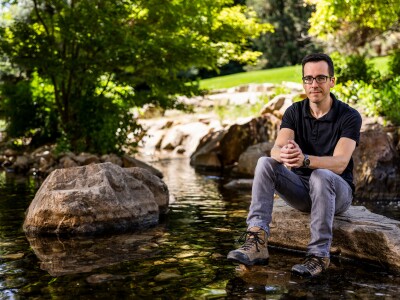Water-well drill can now reach more remote locations around globe
By now, most people connected to BYU are familiar with the Village Drill, the human-powered device built by BYU engineering students that is now digging wells across the globe.
The drill, first built in 2011, has reached water in 33 countries to date, providing clean drinking water from more than 3,000 wells to over 2 million people. It has been a life-changing success in every way, making an impact across Africa, Latin America, Asia and beyond.
Now the nonprofit behind the Village Drill, WHOlives.org, and BYU engineering students have teamed up again to make a smaller but equally powerful version of the tool that can still reach depths over 100 feet and costs less than $2,500 per well to a local community.
“Having a structure that is small enough to be transported, but large enough and robust enough to handle those forces was a really difficult tradeoff,” said Amy Wood, faculty adviser to the engineering capstone team that built the drill. “We had to take the pieces that were working well from the original design and then add or take away things to make our new version more appropriate for remote locations.”
The main motivation for making a smaller drill was to reduce transportation costs for the equipment. Getting the original Village Drill to remote villages requires hiring out trucks that can cost up to a thousand dollars.
WHOlives.org founder John Renouard said one of the reasons his team went back to BYU was to make a drill small enough to fit into the storage area of a bus. Achieving that would reduce the transportation costs of moving the drill by up to 90 percent.
The new drill, called the SubT(subterranean)- Village Drill, met that goal. Students and WHOlives team members took the new drill to Uganda for the first trial run earlier this year.
“We literally brought the entire drill over in our checked luggage,” Renouard said. “[The students] have come up with a great partner to the Village Drill. It’s smaller and it’s even more portable — which we thought would be impossible — but maintains its strength.”
The project has been personally rewarding to BYU engineering student and Ghana native Kwame Buah, one of the six students who helped develop the new drill.
“Where I’m from, there are many places without access to clean water,” Buah said. “To be able to work on this project, to be able to do something that for me is very personal, and to have the ability to develop a drill that helps improve their living standards, is really cool and I really love that.”











